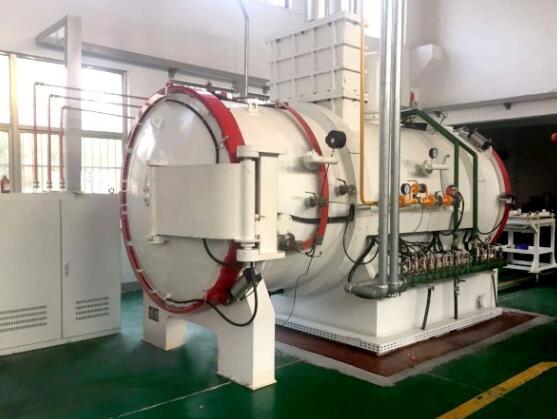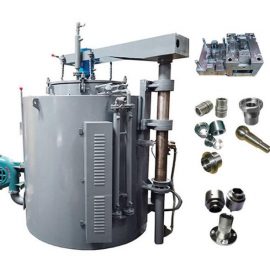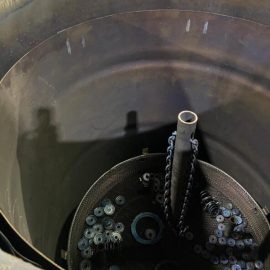Heat Treatment Process Of Extrusion Die
1. The quality of heat treatment of aluminum extrusion die directly affects the service life of the extrusion die. The die is quenched and tempered “+” multiple times to meet the hardness requirements. Quenching is to improve the hardness of the mold, and multiple tempering is to improve the toughness of the mold and stabilize the internal structure. The hardness value of mold heat treatment is stipulated:
Large aluminum extrusion die (F>500mm), HRC45-48; medium die (F300~500mm), HRC47-50; small extrusion die (F<300mm), HRC48-51; detected on the same plane of a set of molds Three points, the hardness value of each point should be within the specified range to be considered qualified.
2. Special attention should be paid to the following points during the heat treatment of the extrusion die:
A. The heating rate in the high temperature section should be fast, and the holding time should not be too long to prevent the extrusion die from being overburned or overheated, overheating – coarse grains, and overburning – low melting point elements and inclusions are dissolved;
B. The aluminum extrusion die should be tempered in time after quenching to prevent cracks;
C. When the hardness of the extrusion die is found to be insufficient or uneven after heat treatment, it should be annealed and heat treated again according to the process;
D. For large aluminum extrusion dies or finished dies with complex cavities, a stress relief tempering process should be added (to eliminate electrical processing and machining stress, that is, to eliminate thermal stress and tissue stress);
The H13 mold is heated and quenched at 1050℃-1100℃, and the vacuum oil quenching can meet the requirements. But generally hot working die does not require such high hardness. Such high hardness performance will be very poor and not easy to use. Generally about HRC46-50 performance is good and durable. The extrusion die is generally quenched at a temperature of 1030℃-1050℃.

Cause Analysis Of Deformation In Heat Treatment Process Study On Insulation Technology Of Vacuum Pessure Impregnation Paint Between Explosion-Proof Motor And Stator Coil Carbon Classification Of Carburizing Heat Treatment



Contact us
Your email address will not be published. Required fields are marked *